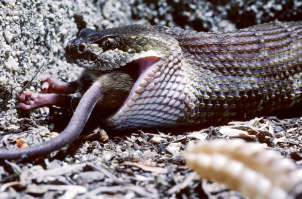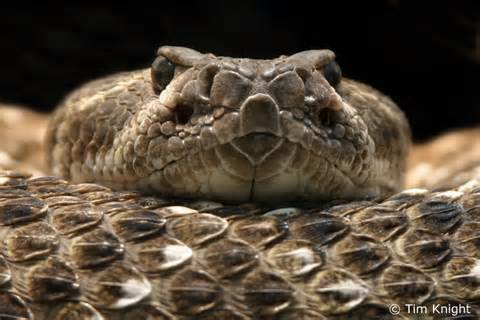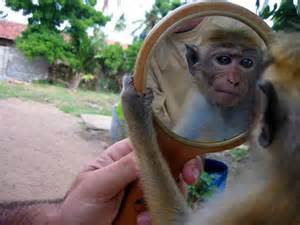Michio Kaku youtube vid on consciousness:
Wherein the theoretical particle/field physicist and science educator provides his own theory of consciousness. It’s a short 5 minute, entertaining video.
As he recalls visiting a zoo and wondering of a snake he saw…
“What was the snake thinking, is this person lunch?” asks Kaku, making a common layman’s category mistake.
Sort of an “Automatic Anthropomorphism” that many of us default to, even well-educated physicists: of which I strongly suspect a study of animal behavior and neuroscience and human cognitive development in some depth might dispel. Hopefully.
Cultural Inertia is a bitch, even for theoretical physicists, especially when they are off their turf.
I take issue with both of his all too common naive assumptions about mind and consciousness and his “theory.”
For starters:
1. There is no evidence the snake is “thinking” anything.
AND
2. “Thinking” in our very human sense of the word (mulling over a problem to decide a course of action employing conceptual mental representations of objects and living things in various future scenarios) is not at all required for the snake’s brain to initiate snake behavior… and most importantly there is absolutely no evidence behaviorally or neurologically that the snake has any level of representation or awareness of human-like representations to “think” and/or experience “consciousness“.
Take rattlesnakes for example. A predator that eats small animals, rodents and birds, lizards, even insects. It bites a small animal and detects if it is immobile and dead not by looking at it, observing it, but by prodding the critter with its snout and smelling it and if the animal moves away it follows it by scent, not by vision. Also using scent it locates the head end of the animal (even we humans with our paltry sense of smell can detect “ass”) and swallows it whole, head first, to allow for optimal folding back of the limbs to fit in its throat and stomach where powerful digestive juices dissolve tough hide, even bone along with soft tissues for a meal.

So why does a rattler bite your leg when there is no hope of swallowing you whole (or in part) and getting a meal? The snake gets nothing except a waste of perfectly good venom.
Was he “thinking“?:
“Could this 5ft human, who even if barefoot I couldn’t swallow past his big toe, somehow still be my next lunch? Could this 5 ft human be a predator like the coyotes, badgers, and raptors that prey on me?”
The snake, with its rather poor eyesight, does have those infrared sensor pits in its forehead that work well within about a foot and detect the heat of your leg which triggers the snake to bite. Normally the snake is “right” and it is an edible organism of the right size to swallow. But the snake can’t “see” that. It can’t detect your size, shape, or inedibilty. It senses mostly by heat and smell, using its poor vision primarily for movement detection.
Without adequate vision to discern living things or their size and their movements in 3 dimensions against a backdrop of immovable objects in its environment how would the snake be said to have any accurate representation of “mouse” “lizard” or “insect,” or “rocks” or “trees” or “gravel path” much less “too big to swallow human.”
Furthermore, how much of an even greater unjustified anthropomorphic assumption is it to suspect all of the above proposed representations are also subsumed under the category/concept of “food” of which the human leg should not be a member?
Despite Kaku’s imaginings, there is no evidence for and no need to assume any snake was thinking, modeling, deciding anything.
It detects heat, and movement and proximity, and scent and strikes. No representation necessary.
Most times it is a right sized creature that becomes anesthetized, immobilized, and eventually dead that it can then detect through smell, find its head end and swallow it.

Its poor eyesight and lack of 3 dimensional object recognition, precisely because of its primitive reptilian brain leave it utterly incapable of forming the most rudimentary of mental representations, much less concepts of objects and animate beings, much less internal awareness of its own concepts in a conscious model of its reality filled with multiple objects and living entities that changes through time, spinning scenarios of the future memories that mediate problem solving and decision making: i.e thinking as we do it.
Those are all attributes of the contents of the human mind, operating during our consciousness. Representations and modeling of which we make a HUGE set of unwarranted, unsupported assumptions in using words like “thinking”, “modeling”, “understanding”, when discussing animals or electrical and mechanical sensors like transistors or… get this… flowers!… which Michio thinks model their environment too and thereby have elements of consciousness…
Oh my.
In Michio’s explication of his theory of consciousness we humans have enough modeling of our external world in our head to reflect upon various future actions with ourselves in those scenarios that also include objects, animals, other people, and their intentions… and he is right on about that!
But does the snake have or need even a rudimentary set of representations that populate some model of its environment in order to detect and devour prey?
The evidence given in the animals behavior in sensing its prey and biting your leg says whatever representation of “prey objects” or “predator objects” it has in its environment may be limited to a range of heat gradients and smells.
Does the transistor really have anything in the sense of a model, even minimal sensory perception? HUGE leap of faith, there.
Snakes and transistors react to stimuli, the transistor through electromechanical forces and hardware, the snake through neuronal firing of its wetware. They sense, that’s it. The snake may have limited perceptions of those sensory inputs, if at all.
The transistor, none. No brain, no perceptions, no concepts, no modeling.
So I propose with transistors, flowers, and snakes there is no model, no awareness of any model, nor representation of themselves as actors in a model, no concepts of other objects and beings in the model which changes through time, no sense of past and future either in real time or in a model.
These are the regular elements of our consciousness, our thinking/modeling of our external environment.
Transistors, flowers, and snakes: Reaction to stimuli without an internal modeling of reality, and no consciousness of any kind.
None of the above has the brain for it. He got that part right.
Ascribing any sort of element of consciousness to a transistor, a snake, or a flower waters down the meaning of the word “consciousness” so far, as we use it, as we experience it, is to make the word utterly meaningless.
A transistor? Really? When Luigi Galvani ran electric current into the leg of a frog, and it contracted, demonstrating the electrical nature of nerve conduction for the first time should we say the frog leg was also demonstrating level 1 consciousness? Its absurd.
Kaku again “The flower has to understand (emphasis mine) maybe 10 units of consciousness: gravity, the weather, temperature…”
“Understand”?? Really?
Oh my.
There’s that anthropomorphic assumption of mind-processes slippin’ in again. Give it rest!
The flower understands NOTHING.
It grows toward the light, dies if its too cold, sends out roots toward moisture but models nothing, mentally represents nothing, it has no mind, no brain, no model, not one aspect of consciousness.
Sensing things is not enough, reacting to stimuli is not enough. Various reflexes can be elicited from even comatose patients without any conscious awareness and much of the behavior animals perform including us conscious humans is performed unconsciously: postural changes, eye movements, grasping a cup of coffee on the table behind you without visual guidance while chatting with your neighbor, for example.
Your parietal lobe knows where your arm and hand are in relation to your trunk and where the coffee cup is within your immediate extra-personal space… but “you” don’t. The conscious self-aware “you“, the actor in your conscious narrative model is unaware of your parietal lobes managing of your limbs and external objects and their interactions in extra-personal space. All done without your conscious awareness or guidance. In fact much of your motor behavior, sensory processing, and perceptual behavior is inaccessible to your consciousness. Your brain even mediates the hand-shape you make to grasp the cup without your conscious self ever giving it a first thought much less a second one.
So why necessarily do we assume the snake is “thinking” anything when it strikes at your pant leg or that swallowable mouse?
Lastly, Kaku describes his levels of consciousness:
Thermostats are level 1,
Chimps at level 2,
And us at Level 3.
Really? ascribing even rudimentary consciousness to mechanical device that represents nothing is ludicrous in the extreme.
Sensing is not consciousness and that is all a flower, thermostat, and maybe a snake can muster. And the sensing in a thermostat is hardly modeling of anything, it is a molecular, mechanical 1:1 response, there is no set of contingent movements or behaviors that may result, the thermostat expands or contracts and that’s it.
There is no meaning, no representation involved on the part of the thermostat. A rock frozen in winter expands and spalls off a chunk as it thaws… no more, no less a mechanical response to a temperature change by crystals in the rock as with the expansion and contraction of a thermostat component… should we call the rock “conscious” as a result?
The thermostat’s contraction may mean a temperature change to us but the consciousness is in us, not the thermostat.
For some additional perspective, here’s a quick list of the elements of consciousness as we humans experience them. A full discussion of these will be fodder for quite another post.
See if you can assume with any certainty that thermostats, flowers, chimps, or your dog experience much of the elements listed below that we experience every minute of every day while awake, conscious and thinking:
Awareness: of both external and internal stimuli.
Orientation: Date, day, time, location.
Stream of consciousness: Self concept, time, narrative, episodic past and future memories, deliberate practice, self-cued recall, agency attribution, causal attribution, awareness of spatial, temporal and analogical relations, scenarios of real objects and events, and of wholly imaginary mental representations of unreal objects and events, inference, abstractions and hypotheticals, emotions, emotional content of thoughts, awareness of our emotional disposition, embodied cognition… to explicate an incomplete list.
If there are any levels of consciousness, and if the chimp could be said to be at some level one (well below the awareness and cognitive content of a 2 yr old) then we fully functioning conscious adults are at level 100, maybe 1,000.
There may be some minimal animal consciousness but there is no evidence, only cultural anthropomorphizing like Michio’s and his elaboration of it into his “theory,” of anything like the experience of conceptually driven human consciousness in other critters, transistors, flowers.
Nor is there any evidence, only long-standing, unfounded cultural myths, of consciousness somehow floating somewhere unattached in the void or suffusing through the entire universe in some mystical, eastern religious kinda way.
Kaku has the idea of our brains, our minds, our consciousness being a “prediction machine“, “running simulations” and that description is spot on, dead right, but his assumptions about any “modeling” or “understanding” in material objects, plants, or other critters is pure poppycock.
Michio proposes Level 1 consciousness in the reptilian brain because he claims the “snake understands” his position in space. Bullshit.
The snake’s nervous system, basic sensory, and motor processes mediate the snakes movement, there is no “understanding” required, nor in evidence. That is pure speculation, and I might add rather low-level musing at best, however “right” to him it seems. The snake does not have to model itself in an environment to successfully navigate through one. The snake does not have to think: “Gee, I’m over here at noonday 3 meters to the left of my favorite rock shelter but its so warm, I won’t have to slither on top to sun myself and maintain my body temperature.”
Go take an animal behavior course and read some of Dan Povinelli‘s work before you propose a theory of consciousness, especially one that includes animals. And read a lot more of what the neuroscientists like V.S. Ramachandran, Michael Gazzaniga, Christof Koch, Antonio Damasio, Susan Greenfield and others have discovered and proposed about consciousness as well.
I promise not to come up with my own theory of quantum physics or cosmology just because I’ve read some Lawrence Krauss or Sean Carroll on the subject and dare to swish my hand around in your toilet so to speak, as I will come up only with turds as you did.
Michio may be a brilliant guy, a good physicist, and an excellent educator, and promoter of science whom we should be grateful for having, and I respect and admire him for his combating Creationism and promoting science and scientific thought, but with his theorizing he is making layman’s assumptions about mind and consciousness due to Cultural Inertia and nothing more. Stick to your physics, pal.
Physicists are often seen (or some see themselves?) at the top of the intellectual food chain (only some philosophers see themselves even higher, above the food chain altogether, Massimo Pigliucci comes to mind) and maybe sometimes feel they can expound on all manner of science whether they have relevant background or not. The vast majority of other scientists wouldn’t think to expound on particle physics or cosmology unless they were trained and experienced physicists. They might relate the current consensus of those working in the field, but certainly not attempt to offer their own version.
In contrast, everybody and their uncle has their pet theory of consciousness it seems, or evolution for that matter.
Imagine if one of our top evolutionary biologists or neuroscientists decided to proffer his theory of quantum mechanics, would we take it very seriously? I think they all know better than to do so and wouldn’t be so presumptuous.
In conclusion:
Consciousness in the sense we humans experience it requires concepts of self, time, events, etc., that animals show no evidence of.
Consciousness in any sense of the word, as we experience it, is impossible without these concepts. Animals are sentient to varying degrees: they are alert, aware, emotive, have some cognition, memory, but experience little to none of the elements of consciousness I have listed above… and have no clue they aren’t conscious.

(1661)

Is he really saying that consciousness = sentience?
I don’t read it that way. He doesn’t seem to be pretending this is a theory in the scientific sense, just one way to conceptualize it. Looks useful to me, if could be brought to the level of a real theory.
It does not answer what, to me, is the real question–where does sentience/suffering enter? i.e., is that fish aware of pain when I hook it, or are those just mechanical movements that resemble our body’s response when we feel pain?
Good point. As far as sentience…the ability to feel, pain as the prime example, given that most animals have complex nervous systems, evolved pain receptors which make an organism respond strongly to aversive stimuli, quick withdrawal before further damage, immobilization of a broken limb etc., is a given, but that’s not consciousness as a human experiences it. He calls physical reaction to stimuli like a thermostat expanding to increase in temperature Level 1 consciousness, and a chimp with pain and conspecific recognition, and some communication skill Level 2 both of which I objected to. The thermostat is not sentient. It feels nothing. Yet in his scheme level 1 consciousness! Sentience then in chimps and other animals is Level 2. I disagree. The key point is does the chimp know he is in pain? He feels is an reacts thats solid, but you cannot assume his inner cognitive psychological state to be like ours and have conceptual representation of pain, and a self concept and a concept of chimp to produce a conscious experience similar to ours “I’m a chimp and I am in pain” There is absolutely no evidence for that and thats the crux of consciousness, not physical reaction, nor sentience which he clearly claims. The fish has no clue what a hook is, you or his pain.